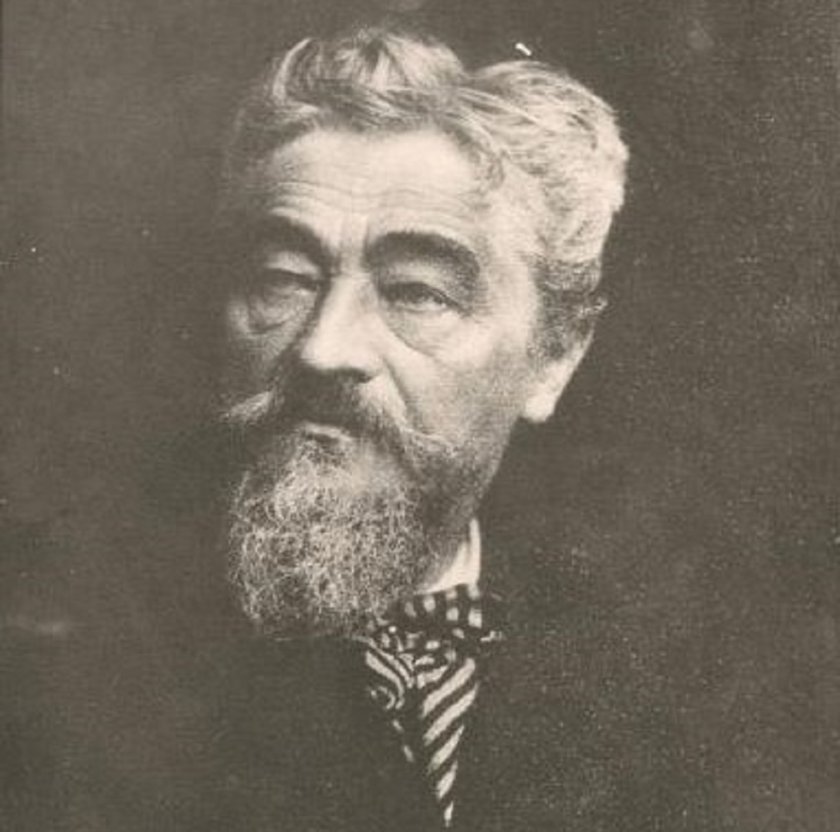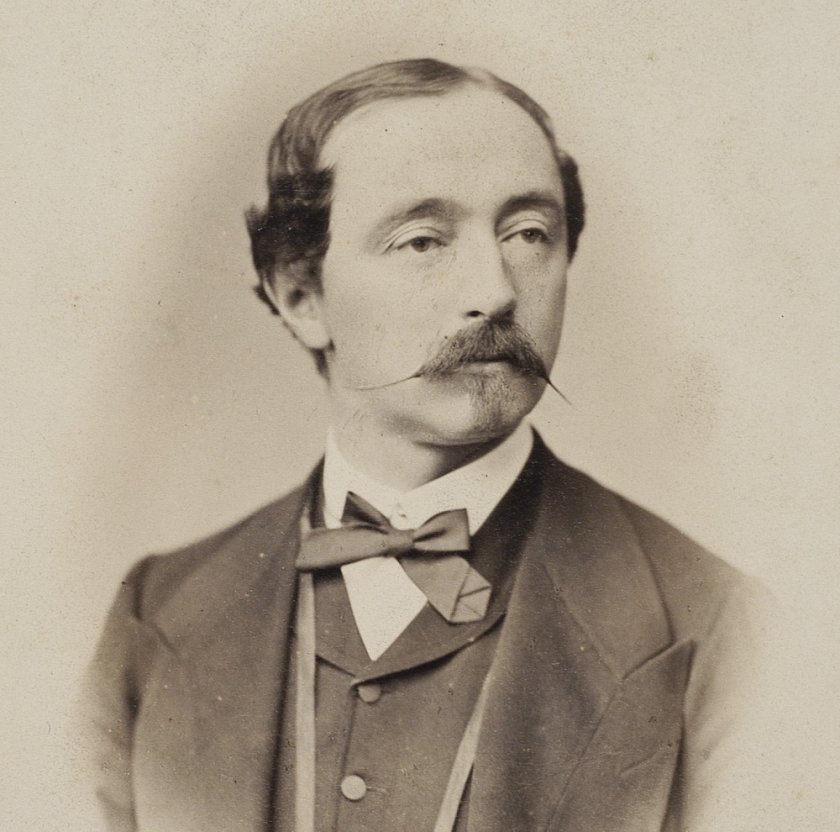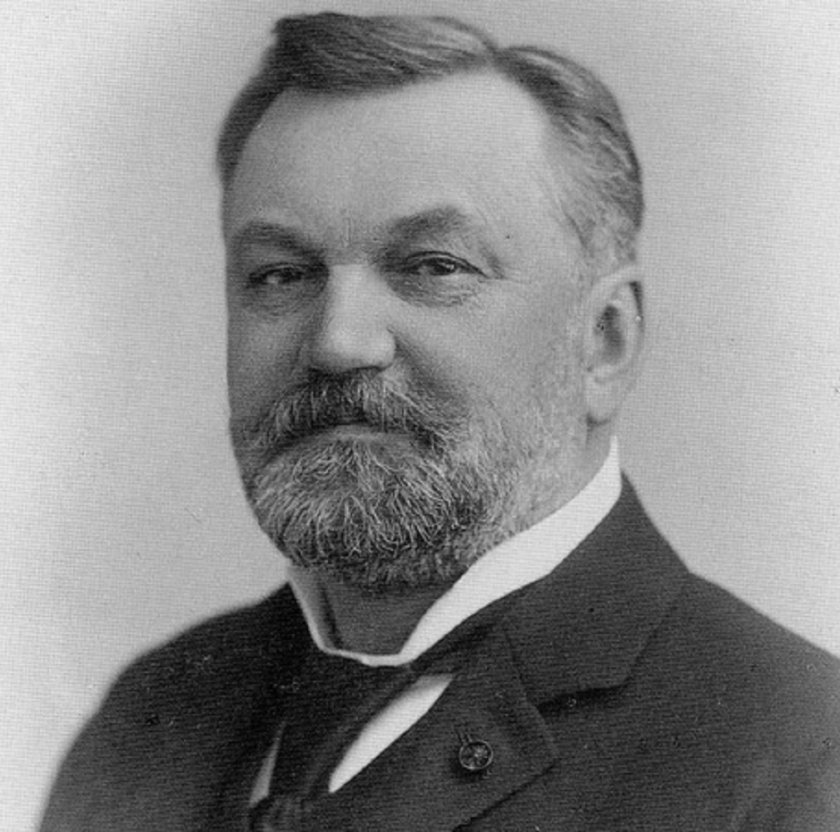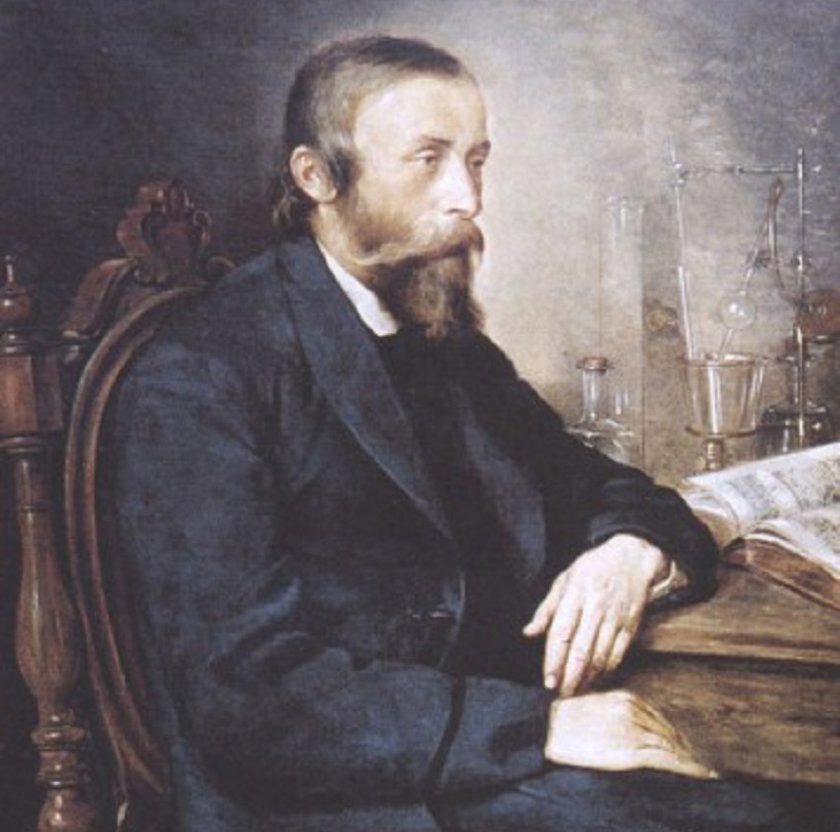Edmund Łoziński
 Fot.
Fot.
He was born in 1837 in the village of Hubin in Volhynia, then part of the Podlasie Governorate of the Kingdom of Poland, to Apollon Łoziński, a landowner, and Helena, nee Żurakowska. Edmund passed his matura exam at a secondary school in Kiev and then left to study in Paris, where he stayed from 1857 to 1860. There, under the influence of General Ludwik Mierosławski, he became involved in the underground movement.
After returning to Volhynia, Łoziński took an active part in the 1863 uprising, joining Edmund Różycki's party as a platoon commander. He was arrested by the Austrians at the turn of 1863. As reported in the Leipzig daily Ojczyzna on 12 June 1864, Łoziński was sentenced by a Lviv court to a year's imprisonment for taking part in the uprising. He spent a total of two years in the notorious "Brygidki" prison in Lviv, with his health deteriorating more and more.
After his release, there was no question of returning home: in the Kingdom of Poland, he was again at risk of imprisonment and confiscation of his property, and on top of that, he was banished from the country by a court sentence in 1871. This is why Łoziński decided to settle in Galicia, in a leased estate of Łuczyce in the Przemyśl county. He was strongly encouraged to buy Łuczyce by Count Jan Konrad Załuski, whose daughter, Janina, Łoziński soon married.
After his release, there was no question of returning home: in the Kingdom of Poland, he was again at risk of imprisonment and confiscation of his property, and on top of that, he was banished from the country by a court sentence in 1871. This is why Łoziński decided to settle in Galicia, in a leased estate of Łuczyce in the Przemyśl county. He was strongly encouraged to buy Łuczyce by Count Jan Konrad Załuski, whose daughter, Janina, Łoziński soon married.
However, moving to Galicia did not end Łoziński's problems with the partitioning powers. There was a real danger that the Austrian authorities would hand him over to the Russians, so the decision was made to emigrate. Initially the Łoziński family stayed in Vienna, but soon moved to Venice where they spent ten years. They earned a steady income through articles written by Łoziński for local newspapers and doing joint translations of popular literature. Trading in paintings turned out to be a very profitable business for Łoziński. He managed to accumulate a collection of about 100 canvases, mostly by masters of the Italian school.
After returning to Galicia in the late 1870s, Łoziński purchased two estates near Krosno: Potok and Turaszówka. The family and their children born while in exile settled in the Potok manor house, where Łoziński also placed his extensive art collection.
After returning to Galicia in the late 1870s, Łoziński purchased two estates near Krosno: Potok and Turaszówka. The family and their children born while in exile settled in the Potok manor house, where Łoziński also placed his extensive art collection.
Łoziński's main source of livelihood was the thriving oil industry. Both Turaszówka and Potok were located in oil-bearing areas, which proved very profitable for Łoziński. In December 1889, he was appointed one of the directors of the newly established oil industry shareholding company, set up to bring together mine owners who contributed capital and provided land for drilling to external entrepreneurs.
The first drillings on Łoziński's land in Potok were carried out by Baron Ludwik Greave from Wielkopolska and Jan Nepomucen Gniewosz in late 1890 and early 1891. However, these were relatively shallow and did not yield significant results. As a result, the mining rights were sold to "Hanowerskie Galicyjskie Gwarectwo Naftowe" [Hanover and Galicia Petroleum Guild], which drilled its first well in August 1891, resulting in a huge gas explosion that was widely reported in the press.
The first drillings on Łoziński's land in Potok were carried out by Baron Ludwik Greave from Wielkopolska and Jan Nepomucen Gniewosz in late 1890 and early 1891. However, these were relatively shallow and did not yield significant results. As a result, the mining rights were sold to "Hanowerskie Galicyjskie Gwarectwo Naftowe" [Hanover and Galicia Petroleum Guild], which drilled its first well in August 1891, resulting in a huge gas explosion that was widely reported in the press.
However, each successive well in the area provided huge oil flows of around 100 tonnes per day. In a short period of time, thanks to the mines that were cropping up all over the place, the region greatly revived economically, and Łoziński himself earned a considerable fortune from the lease of the land. However, he later expressed concern that so much foreign capital was involved in oil production.
The wealth accumulated through the oil industry allowed Łoziński to engage in social activities. The manor house in Potok soon became a meeting place for the local elite. The local community owed the development of education to Łoziński. He donated his land for the construction of a school in Potok, and in the early 1890s he fully funded a one-room elementary school in Turaszówka, which served the inhabitants for the next several decades.
The wealth accumulated through the oil industry allowed Łoziński to engage in social activities. The manor house in Potok soon became a meeting place for the local elite. The local community owed the development of education to Łoziński. He donated his land for the construction of a school in Potok, and in the early 1890s he fully funded a one-room elementary school in Turaszówka, which served the inhabitants for the next several decades.
Łoziński helped the peasants during the difficult time of the typhoid epidemic. He used the hydrotherapy skills he had acquired while living abroad. He was also involved in helping those in need: he supported the building of a poorhouse in Lviv, and was the head of "Towarzystwo Opieki nad Weteranami" [Society for the Care of Veterans of 1863] in Lviv. Łoziński was also a patron and sponsor of inventors such as Jan Szczepanik and Franciszek Rychnowski.
To support the latter's activities, in 1901 he entered into a partnership with the engineers Konrad Łoziński (his son) and Adam Young (his son-in-law). He did not abandon creative work either: he wrote satirical and feature articles, and co-founded the daily newspaper Głos Narodu, published from 1893. He paid great attention to the education of children and supported the development of sport.
To support the latter's activities, in 1901 he entered into a partnership with the engineers Konrad Łoziński (his son) and Adam Young (his son-in-law). He did not abandon creative work either: he wrote satirical and feature articles, and co-founded the daily newspaper Głos Narodu, published from 1893. He paid great attention to the education of children and supported the development of sport.
Due to his many functions, Łoziński spent a lot of time in Lviv, where he owned a villa called "Lubicz", to which he eventually moved his art collection. Towards the end of his life, his name appeared in the press most often in the context of a lawsuit connected with the Lviv soda water factory "Zdrowie", on the supervisory board of which Łoziński sat (in 1901-1904 he appeared as a witness).
During this time, Edmund Łoziński began to suffer from a serious heart condition, which eventually led to his death in Lviv, on 28 December 1904. The funeral ceremonies gathered crowds of people, especially near villa "Lubicz". After his body was transported to Potok, Edmund Łoziński was buried in the parish cemetery in Jedlicze.
During this time, Edmund Łoziński began to suffer from a serious heart condition, which eventually led to his death in Lviv, on 28 December 1904. The funeral ceremonies gathered crowds of people, especially near villa "Lubicz". After his body was transported to Potok, Edmund Łoziński was buried in the parish cemetery in Jedlicze.



